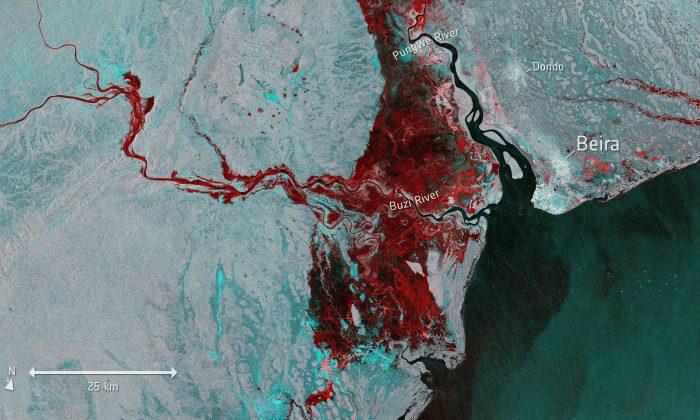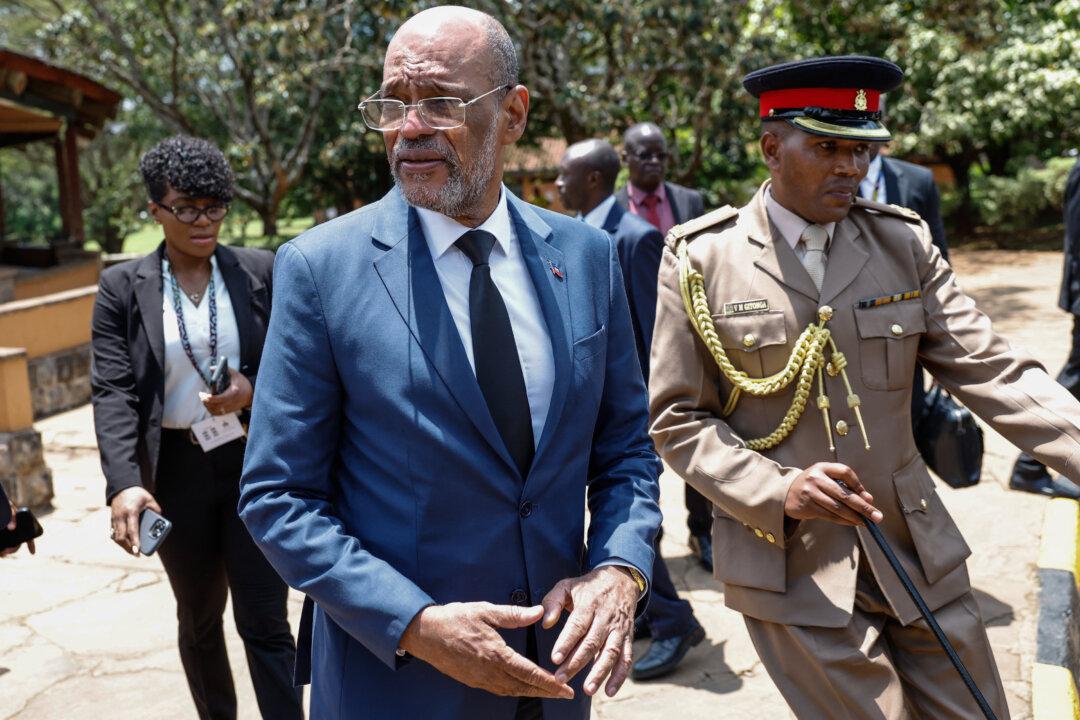CHIMANIMANI, Zimbabwe—A week after Cyclone Idai lashed southern Africa, flooding still raged on March 21, as torrential rains caused a dam to overflow in Zimbabwe, threatening riverside populations. The confirmed death toll in Zimbabwe, neighboring Mozambique and Malawi surpassed 500, with hundreds more feared dead in towns and villages that were completely submerged.
Aid agencies and several governments continued to step up their deployments, with helicopters in short supply for hundreds of thousands of people displaced by the cyclone.
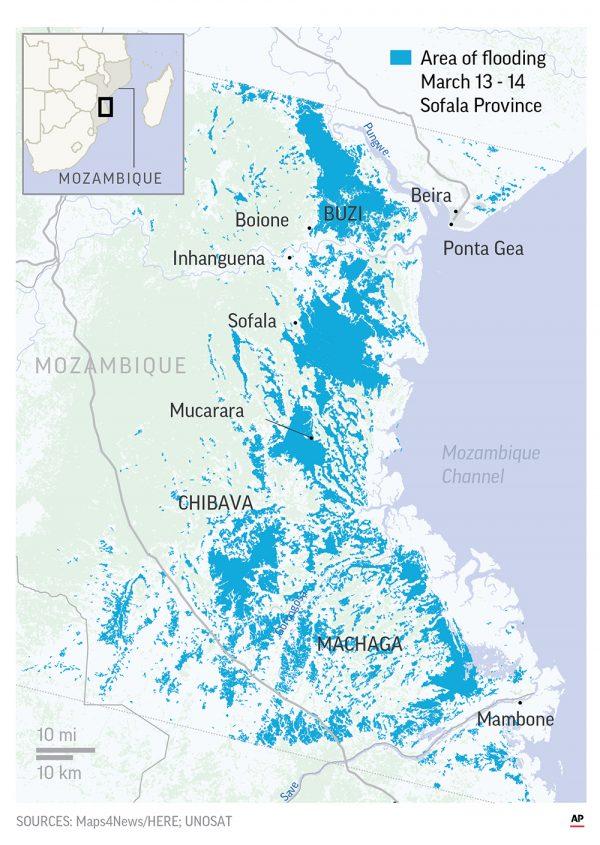
Spokesman Herve Verhoosel of the World Food Program told reporters in Geneva of the “alarming news” that the Marowanyati dam in Zimbabwe was hit by heavy rains overnight, putting populations in the region at risk.
Zimbabwe’s defense minister said more than 120 bodies had been washed into neighboring Mozambique, where residents there buried them, and more bodies were still being recovered in rivers, raising the official death toll in the country to 259.
“Most of the bodies were washed into Mozambique and because they were in a really bad state, they could not keep the bodies,” Defense Minister Oppah Muchinguri said, speaking in the eastern city of Mutare. “So they ended up burying them.”
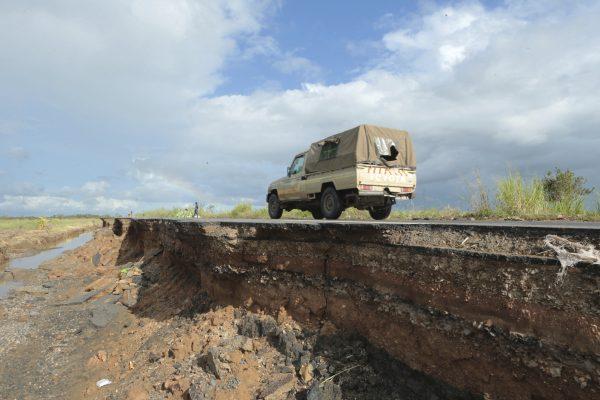
Meanwhile, the confirmed death toll in Mozambique rose to 217, the Portuguese news agency Lusa reported, and in Malawi, at least 56 people were killed. But that was sure to rise. Mozambican President Filipe Nyusi has estimated that 1,000 people could have been killed in his country alone. Zimbabwean officials have said some 350 people may have died in their country.
Hundreds are dead, many more missing and thousands at risk from massive flooding in Mozambique, Malawi and Zimbabwe caused by Cyclone Idai and persistent rains.
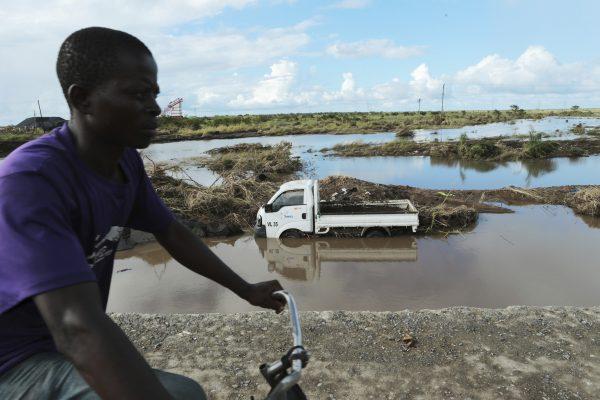
Homes, villages and entire towns were submerged across central Mozambique, where flooding created a muddy inland ocean 30 miles wide. The U.N. food aid agency said 400,000 people were displaced and “in urgent need of life-saving assistance” in Mozambique’s coastal city of Beira and flooded areas along the Pungue and Buzi rivers.
The persistent rains lifted in some areas on Thursday, and floodwaters began to recede in Beira, the worst-hit city, and in the countryside, according to a Mozambican government report.
“Yesterday, 910 people were rescued by the humanitarian community,” said Caroline Haga of the International Federation of the Red Cross in Beira. She said 210 were rescued by five helicopters and 700 were saved by boats.
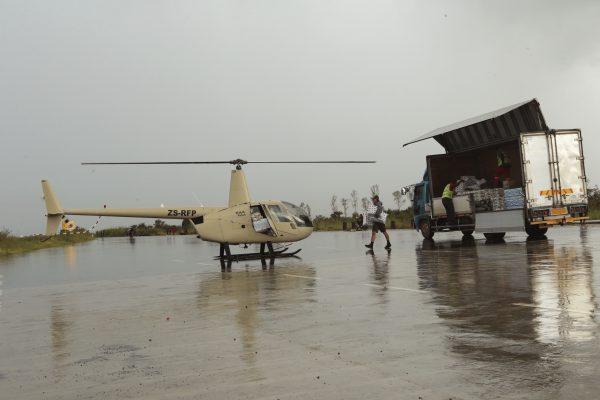
Aid groups were continuing to work non-stop to rescue families desperately clinging to tree branches and rooftops for safety from the surging waters.
“A family saw their brick house swept away from them. When they went to another house for safety, the roof collapsed,” Machiel Pouw, Save the Children’s response team leader in Mozambique, said in a statement. “Another family fled for safety in a tree. There are tens of thousands of heartbreaking stories like this, lives shattered over the past days.”
It will be days before Mozambique’s inundated plains drain toward the Indian Ocean and even longer before the full scale of the devastation is known.
WFP said Malawi’s government had reported more than 920,000 people in the country were affected by the floods. The agency said Idai had had a “limited impact” on Malawi, and projected that the number of affected people will decline as they return home.
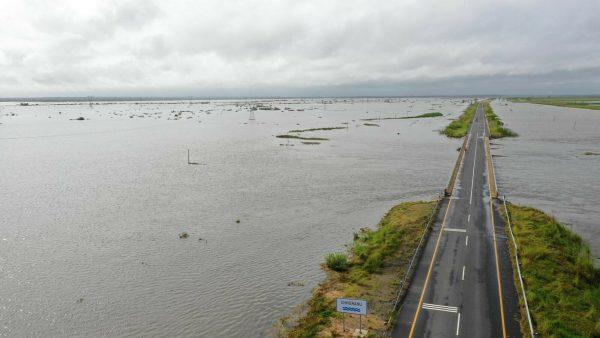
In Zimbabwe, 90 percent of the district of Chimanimani—the country’s hardest-hit—was significantly damaged, the agency said, estimating that 200,000 people would need food assistance over the next three months.
Aid has been slow to reach affected villagers due to collapsed infrastructure, although the military has been handing out small packets of cooking oil, maize meal, and beans.
In Chimanimani, Philemon Dada began rebuilding his life in what was once a picturesque town. With a machete and a hoe, he salvaged poles from the mud to construct a hut to shelter his family, a first step in what he sees as a long and backbreaking journey to rebuild a life shattered by Cyclone Idai.
He is one of many villagers trying to pick up the pieces in Chimanimani after losing homes, livestock and, in many instances, family members. Some have been taken in by neighbors and others are sheltering with church pastors.
“I can say I am a bit lucky. My wife and son are still here with me but for everything else, I have to start from scratch,” he said.
Dada had a few food items handed out by the Zimbabwe military, but he knew that wouldn’t last long and he was eager to start growing crops again. Like many people here, he survives on agriculture.
“My bean crop was ready for harvesting before the cyclone, the maize was close. I am back to zero,” he said.
He is particularly pained by his two prized bulls that did the heavy work of drawing the plow for his field. They died in the floods.
“It may take a year, maybe even more years just to get back on my feet,” he said.
